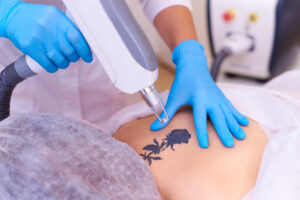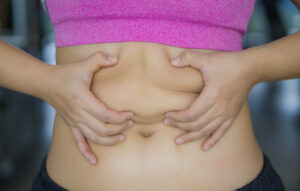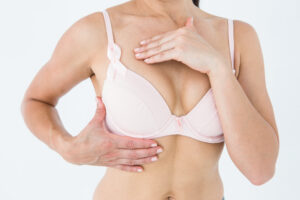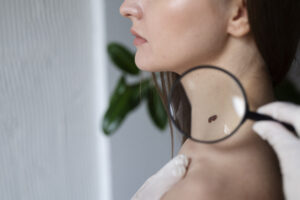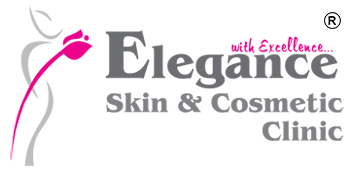Acne is more than just a surface-level issue, it’s a skin condition that can affect your confidence, self-image, and overall well-being. Whether you’re dealing with small bumps or painful flare-ups, not all acne is created equal. Each type comes with its own triggers and requires a tailored treatment approach.
If you’re on a journey to clearer skin and searching for the best acne care in Ahmedabad, this guide will walk you through the various types of acne and how to manage each one effectively.
Why Understanding Your Acne Type Matters
It’s a common mistake to treat all pimples the same way. But what works for blackheads may do nothing for cystic acne and might even make it worse. According to Dr. Shruti Patel, leading skin specialist at Elegance Skin & Cosmetic Clinic, Ahmedabad, an accurate diagnosis is the foundation of any effective skincare plan. That’s why every treatment at the clinic begins with a thorough analysis of your skin condition, acne type, and root cause.
Let’s Dive into the Main Types of Acne and How to Treat Them
1. Whiteheads – Clogged Pores with a Closed Surface
They’re usually white or skin-toned and form when sebum and dead skin cells clog your pores and remain trapped inside.
How to manage them:
- Use a mild cleanser with salicylic acid to prevent pore blockage.
- Keep your hands off picking can cause scarring.
- Consider professional peels at a trusted skin clinic in Ahmedabad for safe and deep cleansing.
2. Blackheads – Exposed and Oxidized Pores
Blackheads are tiny, dark spots that appear mainly on the nose, forehead, or chin. These occur when clogged pores remain open, and the contents react with air and darken.
Treatment tips:
- Apply products containing BHA (beta hydroxy acid) or activated charcoal.
- Clay masks help absorb excess oil.
- Never try to remove them by squeezing get a professional extraction instead.
- Visit Dr. Shruti Patel’s clinic for expert blackhead removal services tailored to your skin type.
3. Papules – Inflammatory Red Bumps
They often feel sore and are a sign of deeper irritation or bacterial activity in the skin.
Treatment approach:
- Stick to calming ingredients like niacinamide or tea tree oil.
- Avoid physical scrubs they’ll worsen inflammation.
- Prescription creams like retinoids may be needed for persistent breakouts.
- Consult an acne specialist early to avoid long-term marks.
4. Pustules – Pimples with Pus
Pustules resemble papules but have a noticeable white or yellow center filled with pus. They form when your immune system fights off bacterial buildup in the pore.
Do’s and Don’ts:
- Maintain a consistent, gentle skincare routine.
- Use non-comedogenic (non-pore clogging) products.
- Absolutely avoid popping them this leads to infection and scarring.
- Dermatological peels and anti-inflammatory treatments can speed up healing and reduce new flare-ups.
5. Nodular Acne – Deep and Painful Lumps
They’re often triggered by hormonal changes or genetic predisposition and can linger for weeks.
What helps:
- Topical treatments won’t reach these oral medications like antibiotics or isotretinoin may be needed.
- For fast relief, steroid injections or targeted laser treatments are recommended.
- These breakouts can cause permanent scarring, so timely expert care is essential.
6. Cystic Acne – The Most Severe Form
Cystic acne presents as soft, swollen, and often painful bumps under the skin. These are filled with fluid and result from deeper infections, commonly linked to hormonal fluctuations or chronic inflammation.
How to treat it:
- Hormonal therapy such as oral contraceptives or anti-androgens like spironolactone can help.
- Oral medications and laser therapies provide effective long-term control.
- Don’t attempt home remedies cystic acne needs professional dermatological care.
7. Fungal Acne – Often Mistaken for Bacterial Acne
Fungal acne (Malassezia folliculitis) may look similar to traditional acne but is actually caused by yeast rather than bacteria. It usually appears as clusters of red, itchy bumps on the forehead, chest, or back.
Managing fungal acne:
- Use anti-fungal cleansers or creams as prescribed.
- Avoid heavy, oil-based products that can feed the yeast.
- A professional diagnosis ensures you’re using the right treatment what works for regular acne can make fungal acne worse.
When to See a Dermatologist
If your acne:
- Has lasted for months or keeps coming back
- Causes discomfort, pain, or emotional distress
- Is leaving dark marks or permanent scars
- Isn’t improving with store-bought products
…it’s time to consult a specialist.
At Elegance Skin & Cosmetic Clinic, Ahmedabad, we believe acne treatment should go beyond just applying creams. Dr. Shruti Patel creates personalised skincare plans by assessing hormonal health, lifestyle factors, diet, and your unique skin profile.
Why Choose Elegance Clinic for Acne Treatment in Ahmedabad
- Personalised consultations based on scientific skin mapping
- Advanced medical-grade treatments for every acne type
- Hormonal evaluations and oral therapy when required
- Acne scar management with latest technologies like lasers and micro-needling
- Friendly, expert guidance with visible results


